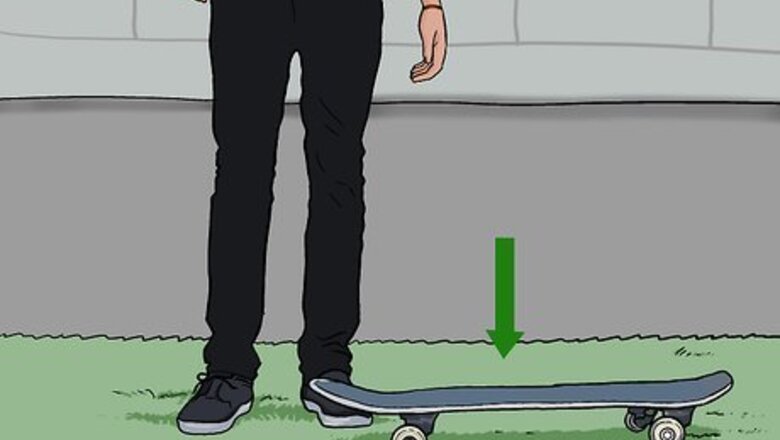
views
- Practice on grass or carpet to make the learning process a little easier.
- Stand in the proper position by setting your front foot in the middle of your skateboard and your back foot on the tail.
- Lift your board in the air by bending your knees, jumping in the air, and pressing on the back tail of your board.
- Shift your front foot to the top end of the board immediately after you jump.
Practicing the Right Moves
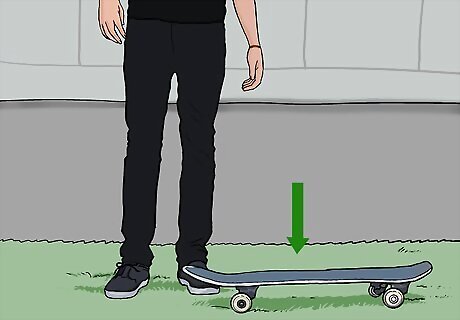
Start on a soft surface like grass. The two biggest parts to doing an ollie are getting the movements right and having confidence that you can do it. Start practicing on a soft surface such as grass or carpet. This will hold your board still as you practice, and won’t hurt as much as concrete if you fall off. If there’s no grass around you or you can’t practice indoors, find a crack in the pavement that you can rest your back wheels in. This should help keep your board from moving as you practice.
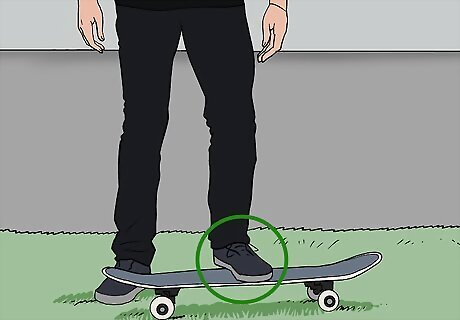
Put your front foot near the middle of the board. Your front foot should be your center of balance as you ride around, so it should be in the center of your skateboard as well. Position your front foot behind the front trucks and near the middle of the board, keeping it parallel to the tip. The positioning of your front foot will change the height of your ollie. If it’s further back, you’ll jump higher, but it’ll be more difficult to pull off well. If you put it further forward, you should be able to do a small jump quite easily. Start off with your front foot near the middle and move it around as you get more confident. Try standing on your skateboard with different feet forward to see what feels more natural. There's no correct way, so see what works best for you.
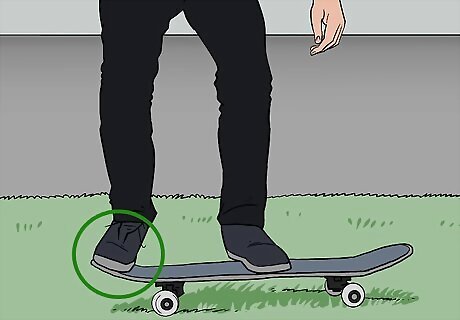
Place your back foot right at the back/tail of your skateboard. Line the side of your back foot up with the back end of your skateboard, so it is as far back as possible. This foot will kick the back of the skateboard down to lift the front up. The further back on your board your back foot is, the more leverage you’ll be able to get, and the easier it will be to ollie. Many skateboarders have only half of their back foot on the tail of their board when they pop. Make sure most of the weight is on the ball of your foot, rather than on the sole. This will make kicking the board downwards much easier.
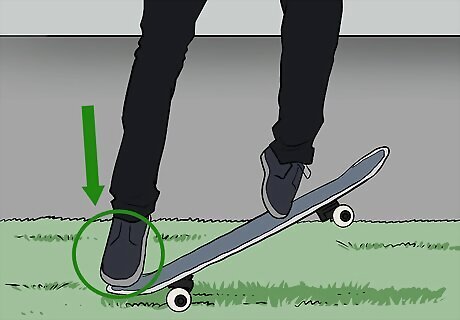
Push down with your back foot to practice lifting the front of your board up. Keep your skateboard held in place and use the ball of your back foot to push down on the back of the skateboard. As you do, let your front foot lift up with the board until the back of the board hits the ground. This is one of the main motions involved in doing an ollie, so you should practice this until you can do it easily and confidently.
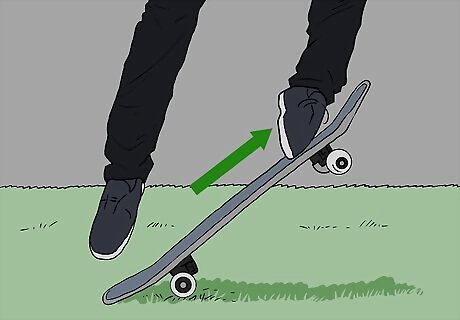
Get used to sliding your front foot up the length of the board. Once you’ve perfected lifting the front of the board up, use your back foot to hold the board in that position. Slide your front foot up the board towards the front, rotating it as you do so. The side of your foot just below the toes should grate along the deck of your board until it reaches the top. The sole of your shoe shouldn’t be touching the board as you slide your foot upwards. All of the contact should be between the deck of the board and the side of your shoe. Practice this motion until you can do it perfectly without having to think too hard. This is the other key part of pulling off an ollie, so you need to be able to do it well.
Perfecting Your Ollie
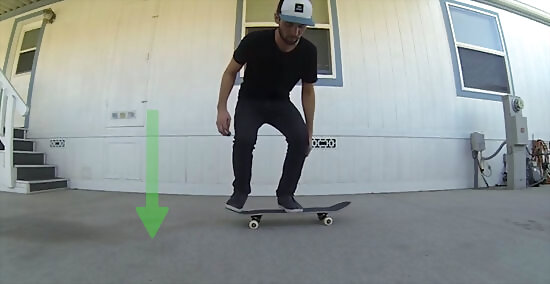
Stand on the board and bend your knees. Position yourself on the board with your front foot in the middle and your back foot near the back edge. Bend your knees slightly to prepare to jump, keeping your shoulders roughly level with your feet as you do. Make sure you can keep your balance as you do so, or else it will be off for the whole trick. Try and stay on the balls of your feet as you crouch. If you push too far up onto your toes, your board will start spinning away from you as you jump.
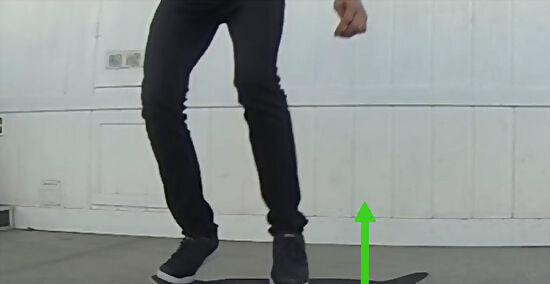
Jump into the air with your front foot first. Once you’ve crouched down, you need to spring back up again to take your weight off the board and let it lift off the ground. Jump up, trying to put weight on your front foot first and then your back foot. It may be easier to think about this as jumping off your back foot. Lift your front foot away first and then jump off with your back foot.
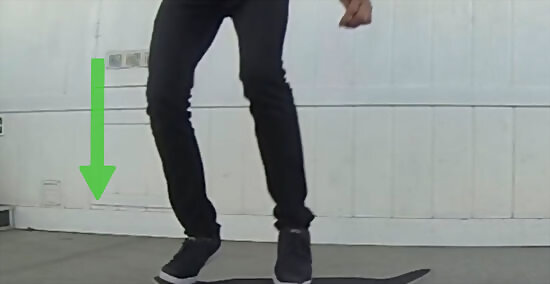
Kick down on the back of your board as you jump. Use the same technique that you've been practicing to push down on the back of the skateboard with your back foot. Try to do this just as you feel your weight lifting off of the board so that you only need to lift the board and not yourself! Getting the timing of the downwards kick right is crucial when pulling off an ollie. Don’t worry if you don’t nail it the first time, just keep on practicing. The board should just barely touch the ground before you “pop” away from and go into the air. If you drag the board along the ground too much, you’ll slow down and lose momentum for the trick.
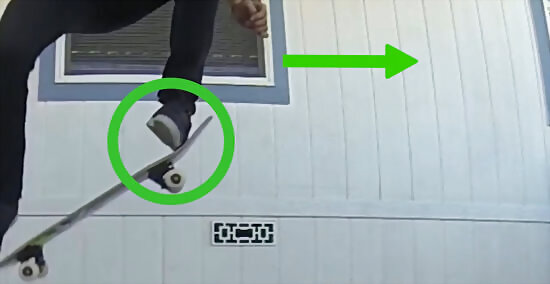
Slide your front foot as soon as you start jumping. Use the same movement you have been practicing to slide your foot towards the top end of the board, just as you jump off it and kick the back down. The front of your board should lift up as you slide your foot along it, with your foot hitting the top of the board at the highest point of your jump. Remember that this step must be performed at the same time as jumping. Sliding too soon will result in an ollie with little height; sliding too late will result in an ollie that doesn't get leveled out at its highest point.
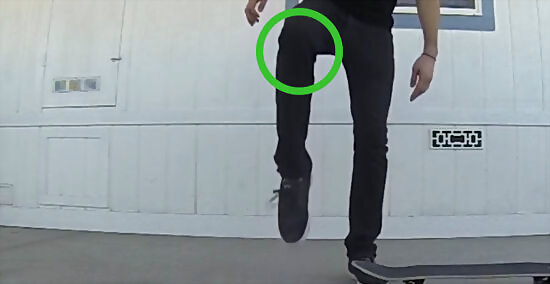
Pull your knees up towards your chest. Your skateboard can only lift up as high as your feet, so you’ll need to bend your knees upwards as you jump. The exact distance you need to lift your feet will depend on how high your ollie is, but with a little practice, you should be able to easily tell how high you need to lift your feet.
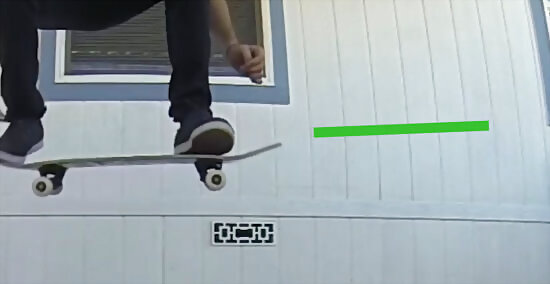
Kick over the top of the board to level it out. As the front of the board reaches its highest point and your foot approaches the top, push your foot forward into the board. This will force the front of the board to lower down and the back to raise up, lifting the whole board into the air and straightening it up. Rotate your foot slightly as you do this so that you can land flat on your feet as the board hits the ground. It might take a while to get a hang of exactly how far you need to push your foot forward. If you kick too far, you might not be able to land the trick. If you don’t push far enough, your board won’t level out and your landing might be a little shaky. Keep practicing until you get a feel for it.
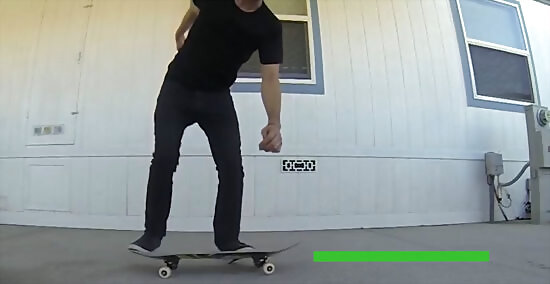
Straighten your legs just before landing. As the board levels out and you feel yourself begin falling back towards the ground, begin straightening your legs out and moving them over the wheels of your board. This will give you better balance and let you bend your knees slightly as you land to absorb some of the shock. If you land with your front foot on the middle of the board, you might risk snapping the board in half. Similarly, if you land with too much weight on either end, you might snap the nose or tail off. Keep your feet over the wheels, or trucks, for the best landing.

















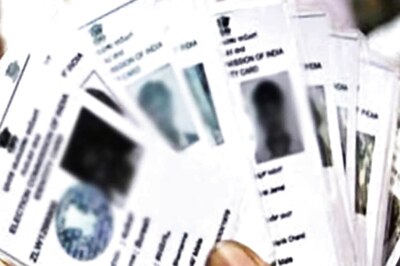


Comments
0 comment